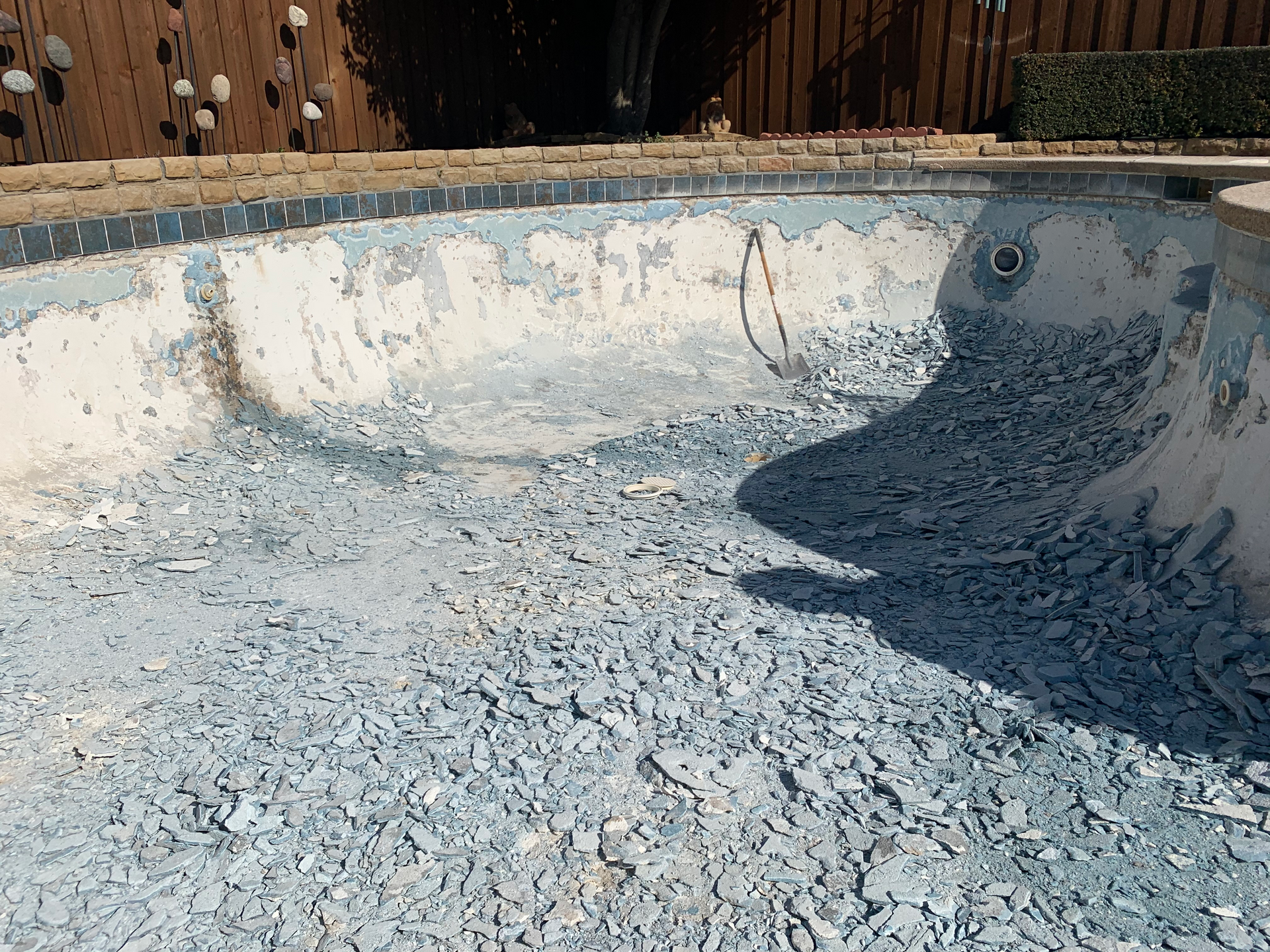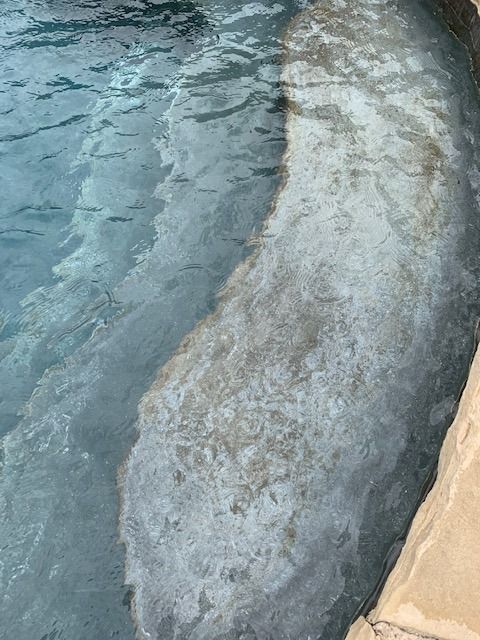What Type of Pool Finishes Are Available?
There are so many plaster finish options available that the task of choosing one can be daunting. Unlike other masonry or hardscape surface products, pool plaster is constantly subjected to varying water chemistry conditions, especially if the pool is not properly maintained. The constant exposure creates an environment where mineral content of the surface and water will cause the plaster surface appearance to change over time.
Most Popular Finishes
- White Plaster
- White Plaster with Blue Quartz added- Color Quartz
- Quartz Finishes
- Pebble Finishes - Polished Pebble / Hand polished
White Plaster
- Price: $
- Longevity: 10 Years
Resurfacing with plaster is the most economical, but generally does not last as long as aggregate or quartz surfaces. Standard white plaster is the tried and true pool and spa surface finish. White plaster has been around as long as people have been building swimming pools and it remains a popular choice in spite of the myriad of choices that have come into the market in recent years. Its simple combination of white cement, white marble aggregate and water make for an economical choice.
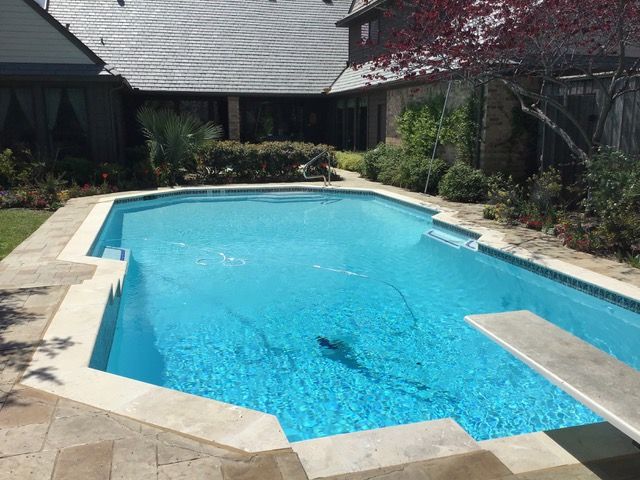
Color Quartz
- Price: $$
- Longevity: 10 - 12 Years
Color quartz is a white plaster alternative where a high percentage of blue quartz is added to the white plaster to produce a beautiful blue hue. It is very smooth to the touch and one of the most affordable pool finish products available.
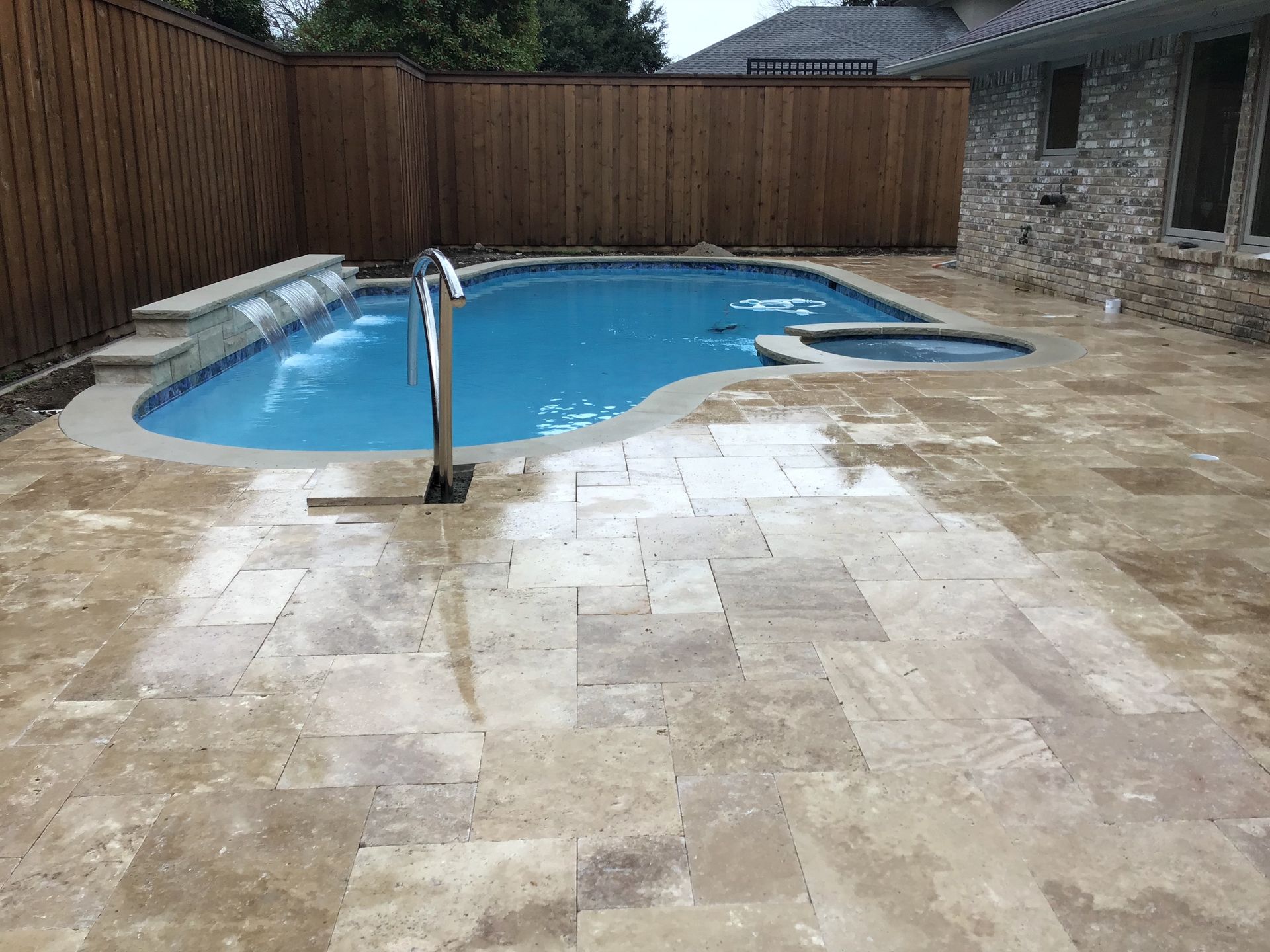
Quartz
- Price: $$$
- Longevity: 15 Years
Highly innovative addition to the palette of surface options has been the use of special colored ceramic aggregate products with or without dyes. These aggregates are basically a very specialized form of ceramic-coated sand that comes in a variety of pre-mixed plaster products. The finishes come in a broad range of colors, from vivid light to dark blues, grays to more subtle hues such as beige or soft greens as well.
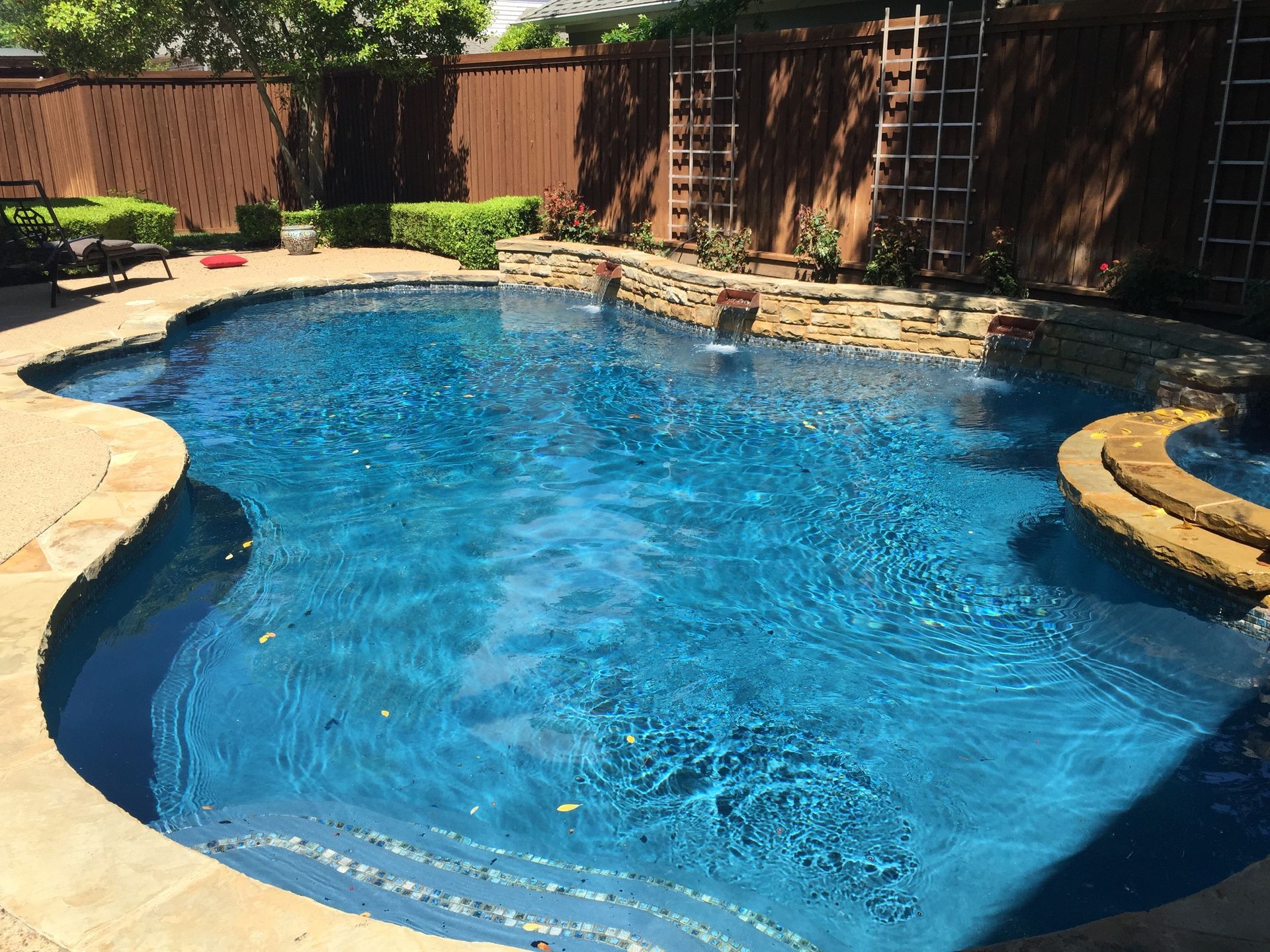
Pebble
- Price: $$$$
- Longevity: 20 Years
Pebble is the ultimate answer to all pool surface concerns. Pebble surfaces consist of small, smooth river pebbles embedded throughout the product. Pebble surfaces come in a broad range of color combinations, are beautiful and have an extremely natural appearance. Pebble surface is also the most durable surface available.

